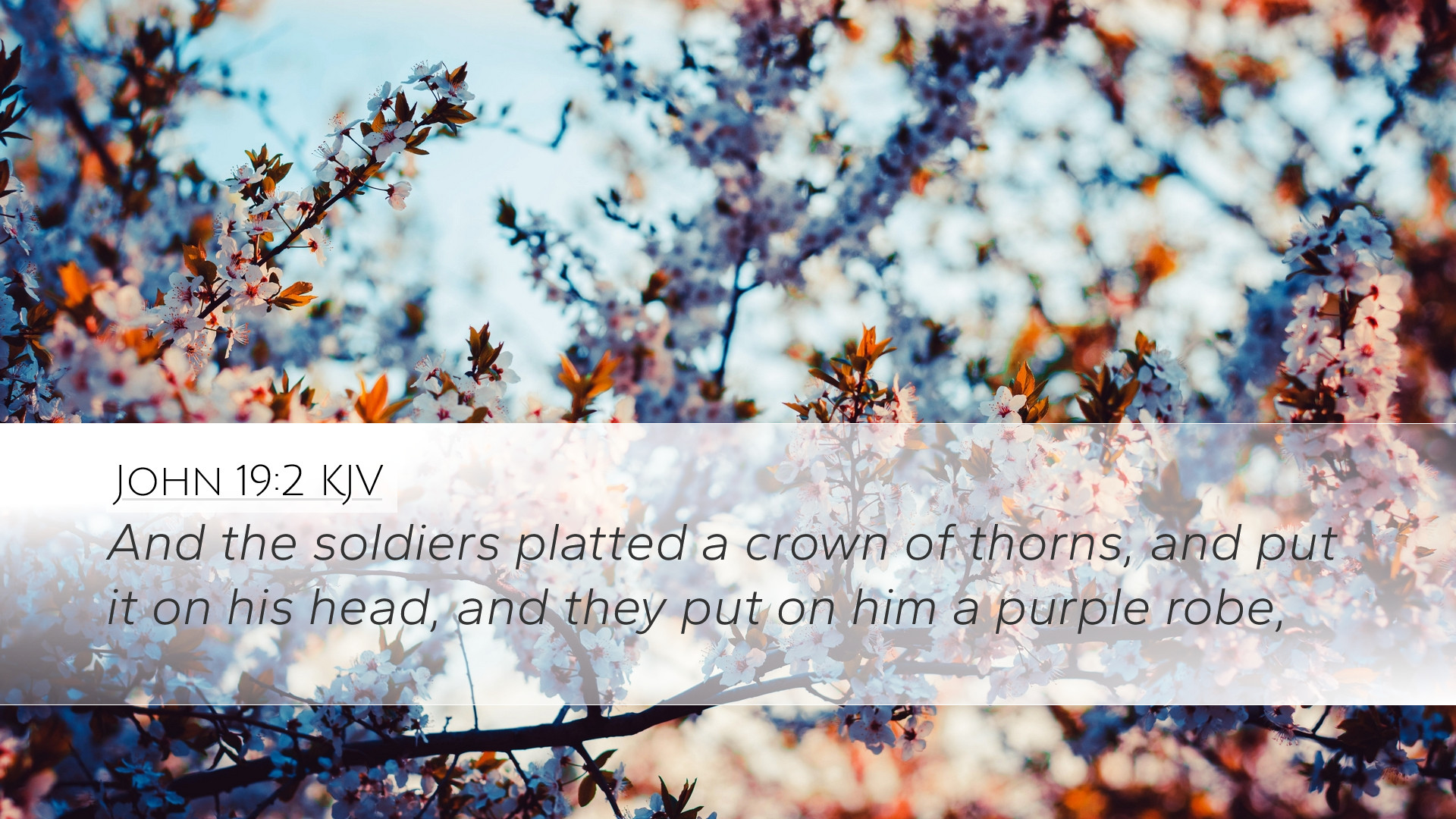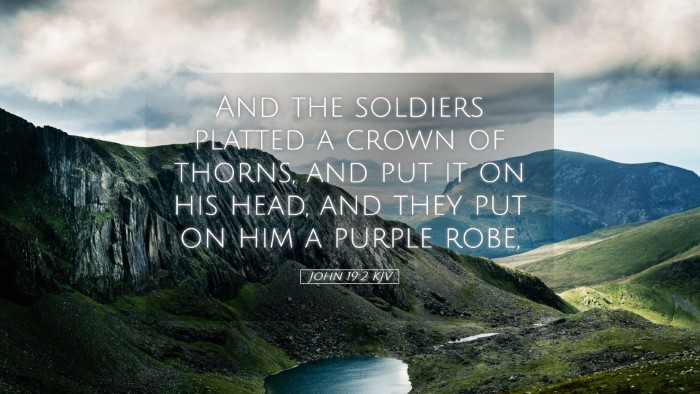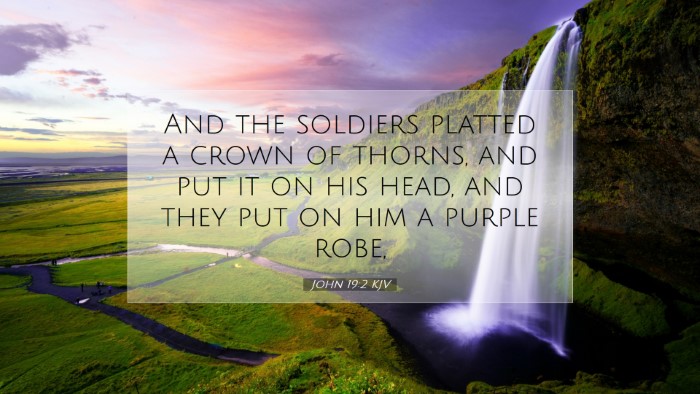Commentary on John 19:2
John 19:2 (KJV): "And the soldiers platted a crown of thorns, and put it on his head, and they put on him a purple robe."
Introduction
This verse stands at a pivotal moment in the Passion narrative, detailing the mockery and suffering inflicted upon Jesus. The act of crowning him with thorns and dressing him in a purple robe are symbolic gestures that highlight the profound irony of Christ's kingship and the extent of His humiliation.
The Soldiers' Mockery
Matthew Henry notes that the soldiers, in their mockery, manifested the disdain with which the world often treats Christ. They did not recognize Him as the true King; instead, they engaged in a brutal parody of royalty. This disdain underscores the cultural and religious blindness prevalent among the Roman soldiers who participated in this act.
Albert Barnes comments on the significance of their actions, emphasizing that the soldiers were fulfilling the prophecy of Isaiah regarding the suffering Servant (Isaiah 53). Their actions were not merely random cruelty; they ironically highlighted aspects of Christ's true identity that they failed to understand.
Crown of Thorns
The 'crown of thorns' is rich in symbolism. Adam Clarke suggests that this crown serves as a poignant reminder of the curse placed upon the ground at the fall of man (Genesis 3:18). The thorns represent the pain and suffering brought into the world due to sin, which Christ bore on behalf of humanity.
Matthew Henry elaborates on this symbolism, affirming that the crown of thorns not only signifies suffering but also the shame associated with Christ's mission. It serves as a visible representation of the weight of sin and the depth of His humiliation as He prepares to bear the sins of the world.
The Purple Robe
The purple robe is another element laden with meaning. In the ancient world, purple was a color associated with royalty and wealth. Here, it serves as a stark contrast to the nature of Christ's kingdom, which is characterized by humility and service.
Albert Barnes underscores that the soldiers did not comprehend the true nature of Jesus’ kingship. By placing the purple robe on Jesus, they satirically pointed to his claim of being a king, while simultaneously stripping him of dignity. This act by the soldiers reflects the broader ignorance that humanity often has toward divine revelation.
Theological Implications
This moment leads to significant theological reflections on the nature of Christ’s kingship and the concept of suffering in the Christian faith. Matthew Henry points out that the downward path of Christ's humiliation was essential for the upward path of redemption. His suffering and rejection paved the way for the ultimate victory over sin and death.
- Humility in Kingship: The representation of a king bearing suffering teaches followers of Christ about true humility.
- Identification with Humanity: Christ's experience illustrates his deep identification with human suffering and sin.
- Ultimate Victory: This moment foreshadows the resurrection, highlighting that suffering is not the end but a path to glorification.
Conclusion
John 19:2 captures a profound moment of mockery that is both chilling and revelatory. Through the actions of the soldiers, we discern deep truths about Christ's mission, the gravity of sin, and the irony of his kingship. The insights provided by Henry, Barnes, and Clarke invite readers to reflect on their own understanding of suffering, humility, and the nature of Christ. This verse serves as a reminder that through humiliation comes exaltation, and through suffering comes redemption.


